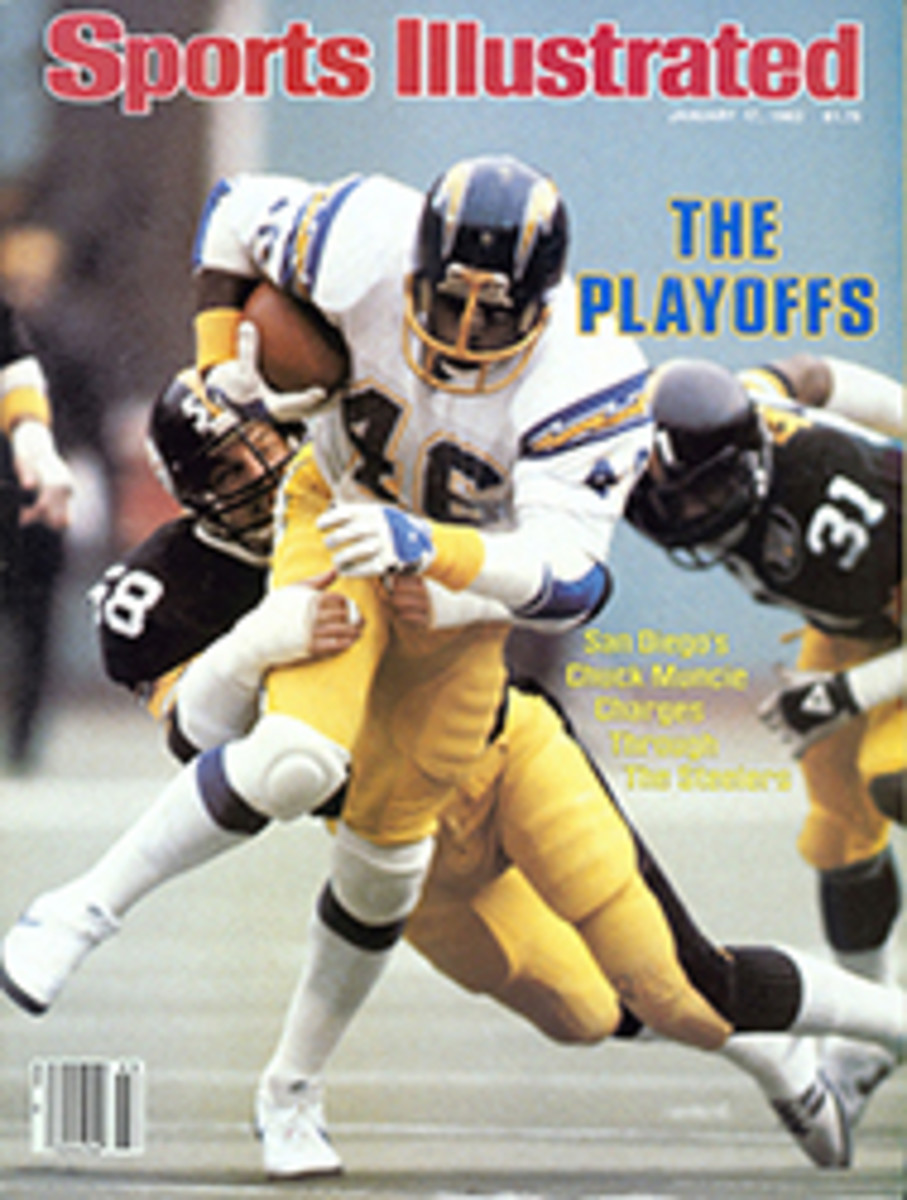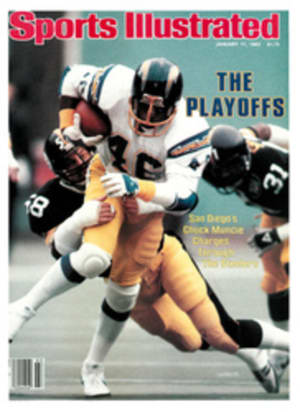
Please don't eat the lettuce
Because this Tucson Open was the mm first professional golf tournament ever staged in which all the players were supposedly equals—under new PGA Tour rules everyone in it was exempt from having to qualify for all of 1983—it seemed appropriate that it was mathematically possible late Sunday afternoon that as many as eight players could wind up in a tie, and that the sudden-death playoff might last until Easter. In a way, this would have made sense because there were so many people out there who a year ago were rabbits.
Alas, the first Tour event of the year wound up in only a three-way tie, and Gil Morgan, the quiet, vitamin-taking optometrist, who had been winless for 3½ years, ran home a 22-foot birdie putt on the second extra hole to outlast Lanny Wadkins, who won three tournaments last year, and Curtis Strange, who never seems to win but makes a lot of money anyway.
It was a tournament to which Morgan first laid a claim with his opening-round five-under 65, which briefly led the field. After that, it belonged momentarily to all sorts of fellows: to Scott Hoch, who on Friday shot a 63, tying the course record, and was the pacesetter after 36 holes, then to Calvin Peete, who led after 54, and finally to anyone capable of making a late birdie on Sunday. Along the way Johnny Miller, Andy Bean and Fuzzy Zoeller also had their chances.
Sunday began with Peete, who was going for his seventh victory in his last 14 tournaments (including two recent wins in Japan), one stroke ahead of Miller and Hoch, two ahead of Wadkins, three ahead of Morgan and Zoeller and five ahead of Strange and Bean, among others.
The way the playoff came about was that on Sunday afternoon Strange made a true arsonist's move when he birdied the 13th, 14th, 15th and 16th holes at the Randolph Park North Course, which featured bright sunshine and bumpy greens, for a closing-round 65 and a nine-under total of 271. Thus he was in the clubhouse with the lead while the rest of the drama unfolded. Morgan got to three under on his round, parring the last six holes for a 67 and his 271. Peete blew his two-stroke lead in the middle of the round, bogeying the 14th and 15th holes and missing the playoff by a shot. Meanwhile, Wadkins was firing a two-under 68 for a 271 total but failing to get a tiebreaking birdie on the entire back nine. Playoff time.
"I thought all day that Calvin would win," said Morgan later. "Then I thought Curtis would win when he started to run the table. In the playoff on the first hole, I was pretty certain Lanny would win."
On the first extra hole, Morgan drove badly and had to scramble for par with a difficult putt to stay even with Wadkins and Strange. Then, very quickly, it ended. Give a man new life, and he'll hole a long one on you. Which is what Morgan did at the second extra hole with his 22-footer. Wadkins and Strange then missed, though Wadkins at least hit the cup and spun out.
Morgan hadn't won a tournament since the 1979 Memphis Classic, so his name was starting to sound almost as unfamiliar as those of some of the former rabbits who will be part of the permanent Tour population from now on. Their presence out there may well change the look of the Tour in due time.
The Tucson Open was the first event on the new all-exempt PGA Tour. Gone is the Monday qualifying round for so-called rabbits.
Monday qualifying was that painful weekly ordeal in which the 80 or so lesser-known golfers on the edges of the Tour had to compete in an 18-hole round to see which 30 or 40 of them, on the average, would be allowed to play in the tournament proper that usually would begin on Thursday.
No one seems to know why rabbits are called rabbits—the best guess is that the name comes from a Tony Lema line: "They're always nibbling at the lettuce"—but each year these young hopefuls, the Tour's lowest social caste, played on Monday for a chance to earn a few bucks beginning Thursday. The only players who didn't have to qualify this way were the top 60 money-winners and/or tournament victors from the previous year, plus assorted immortals who had done something special in the past, such as winning one of the major U.S. championships.
A rabbit could temporarily become a non-rabbit by playing well enough on Monday to get admission to the tournament and then making the 36-hole cut at, let's say, Tucson. This would assure him of a spot in the field the following week in, let's say, Los Angeles. Needless to say, most rabbits lived dangerously. On rare occasions, a rabbit might jump up and win a tournament, which earned him a whole year's worth of non-rabbit-hood. But mostly they came and went like—well, like rabbits.
All last year, however, the 300-odd U.S. touring pros, many of whom could more aptly be described as "golf bums" rather than young hopefuls, were aware that with the start of 1983 they might be confronted with a career change.
A new order would be in effect for determining who got a spot in a given tournament. First would come as many immortals as might choose to enter. After them the 125 leading money-winners of '82 would have a chance to play, followed by as many of the 50 low shooters from the new PGA Tour Qualifying Tournament as would be necessary to fill out the field. There is no more chance for fringe players to squeeze in through Monday qualifying. Goodby rabbits—and good riddance, most say.
In making this change, the players wisely took precautions to be sure the marquee names would have no trouble staying eligible. All sorts of provisions are written into the regulations to allow any Arnold Palmer or Lee Trevino to enter a tournament whenever he feels like it. And if you read the fine print, you can find a rule saying PGA Tour Commissioner Deane Beman may add two foreign players to a field any time he sees fit. This will undoubtedly become known as the Severiano Ballesteros-Greg Norman Rule.
In any case, the rich new season—prize money is expected to go from $16.9 million last year to $22 million this—started off in Tucson with a Mike Nicolette, for example, enjoying the same status as a Craig Stadler. Nicolette, who finished No. 106 on the money list, would have missed the old top 60 exemption by 46 places. There are also former rabbits who missed the cutoff at 125 but are now full-fledged members of the Tour because they finished among the top 50 in the Qualifying Tournament, which was held in mid-November at the Tournament Players Club in Ponte Vedra, Fla. Among them are fellows like Gary McCord, who was No. 130 on the money list, Lyn Lott (146) and Buddy Gardner (192), all of whom had once been exempt but had fallen from grace. As McCord said in Tucson, "I feel like I've been sprung from jail."
It was particularly nice that the 34-year-old McCord got back on the Tour by the hard road of the Qualifying Tournament. A likable, wisecracking guy in a mustache who is quite an accomplished amateur magician, McCord, who had a top 60 exemption in 1976, was actually the person who came up with the idea for the all-exempt Tour. "It's better for everybody, even the guys who didn't make it," he said. "They can get on with their lives, find something else to do. The best thing is that the guys who make it this far play with less pressure on them."
Ex-rabbit Gardner described it this way, echoing an argument often made by rabbits in the past: "Even when you'd get in a tournament, you'd have to play cozy on Thursday and Friday and try to make the cut so you could play the following week. Now we can shoot at the pins from Thursday on because our life won't depend on what happens in one tournament. I think you'll see lower scoring overall, and I hope you'll see some new winners before it's over."
It could be argued that the new system had a definite effect on the Tucson Open, not at the top where Morgan and a cluster of familiar chaps battled it out for the winner's purse of $54,000, but among those players whose names rarely make the leaderboard. The field of 144—after daylight saving time arrives the number goes up to 156—was over-populated with former rabbits because a lot of Tom Watsons weren't entered. In fact, 32 out of the 50 Qualifying Tournament golfers got into the event. And when 39 might-have-been rabbits played well enough to make the 36-hole cut, it put extra pressure on a few stars. The result was that Stadler, the defending champion at Tucson and the leading money-winner in 1982, missed the cut, as did such highly regarded players as Bobby Clampett and Bruce Lietzke. Meanwhile, Joey Rassett, a flat-out rookie who finished 14th in the Qualifying Tournament, shot a freewheeling 64 in the second round and made himself very prominent on the leaderboards for most of the tournament until a double bogey took him out of contention on Sunday.
In the end, 23 players who would have been rabbits this year finished among the top 50 at Tucson. To their credit, they shot lower than such names as J.C. Snead, John Cook, John Mahaffey, Jim Simons and Peter Jacobsen.
All in all, the only serious question posed in Tucson by the all-exempt format was the following: Do you really want to live in a country where a Buddy Gardner (old No. 192 on the money list) can make the cut, but a Craig Stadler (No. 1) can't?
At the moment, Gil Morgan doesn't mind, of course.
PHOTO
Morgan survived the rabbit test by winning a three-way playoff.
PHOTO
Erstwhile rabbit McCord dreamed up the new plan.

